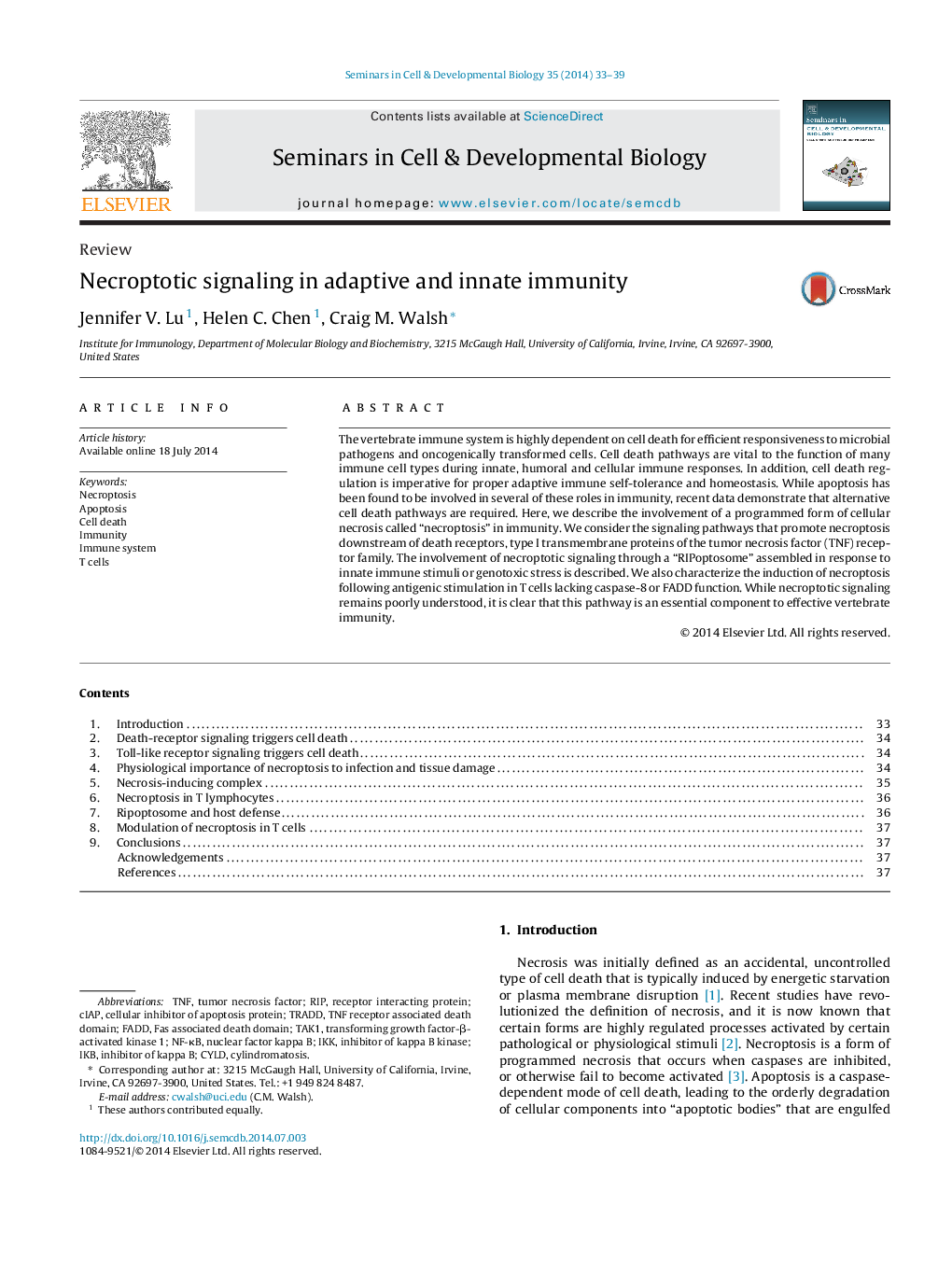| Article ID | Journal | Published Year | Pages | File Type |
|---|---|---|---|---|
| 8480547 | Seminars in Cell & Developmental Biology | 2014 | 7 Pages |
Abstract
The vertebrate immune system is highly dependent on cell death for efficient responsiveness to microbial pathogens and oncogenically transformed cells. Cell death pathways are vital to the function of many immune cell types during innate, humoral and cellular immune responses. In addition, cell death regulation is imperative for proper adaptive immune self-tolerance and homeostasis. While apoptosis has been found to be involved in several of these roles in immunity, recent data demonstrate that alternative cell death pathways are required. Here, we describe the involvement of a programmed form of cellular necrosis called “necroptosis” in immunity. We consider the signaling pathways that promote necroptosis downstream of death receptors, type I transmembrane proteins of the tumor necrosis factor (TNF) receptor family. The involvement of necroptotic signaling through a “RIPoptosome” assembled in response to innate immune stimuli or genotoxic stress is described. We also characterize the induction of necroptosis following antigenic stimulation in T cells lacking caspase-8 or FADD function. While necroptotic signaling remains poorly understood, it is clear that this pathway is an essential component to effective vertebrate immunity.
Keywords
NF-κBTNF Receptor Associated Death Domaininhibitor of kappa B kinaseFas associated death domainTNFTRADDTAK1IKBFADDIKKcIAPtransforming growth factor-β-activated kinase 1ApoptosisImmune systemT cellsCyldCylindromatosistumor necrosis factornuclear factor kappa BCell deathImmunityinhibitor of kappa Bcellular inhibitor of apoptosis proteinNecroptosisRIPReceptor interacting protein
Related Topics
Life Sciences
Biochemistry, Genetics and Molecular Biology
Cell Biology
Authors
Jennifer V. Lu, Helen C. Chen, Craig M. Walsh,
